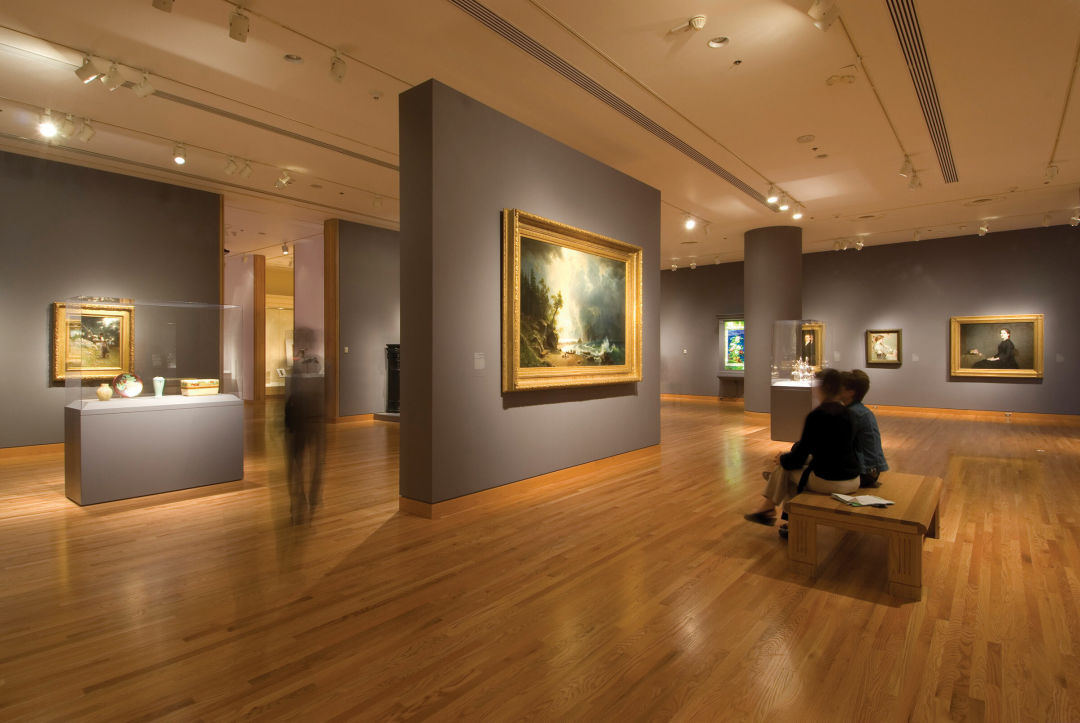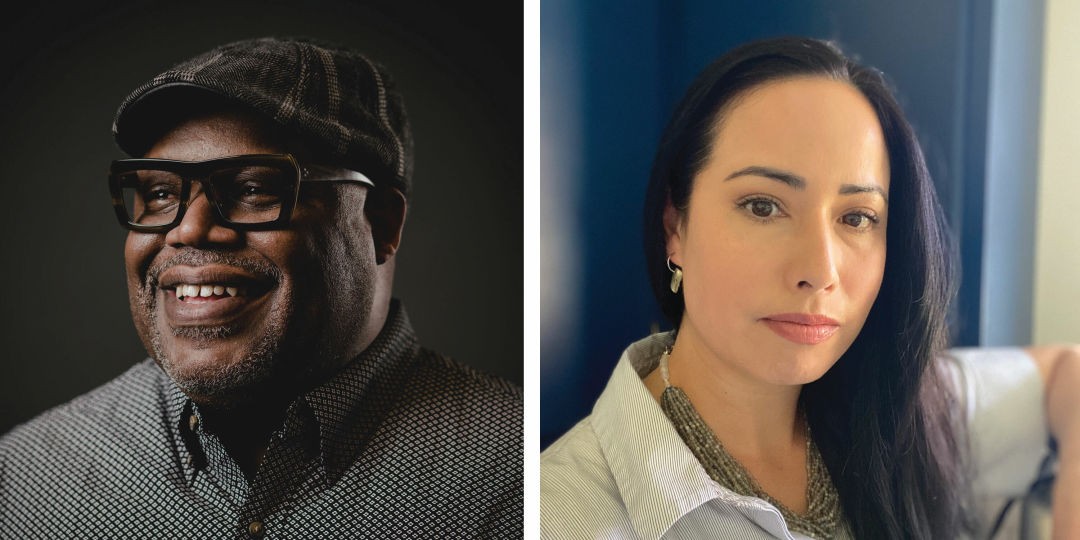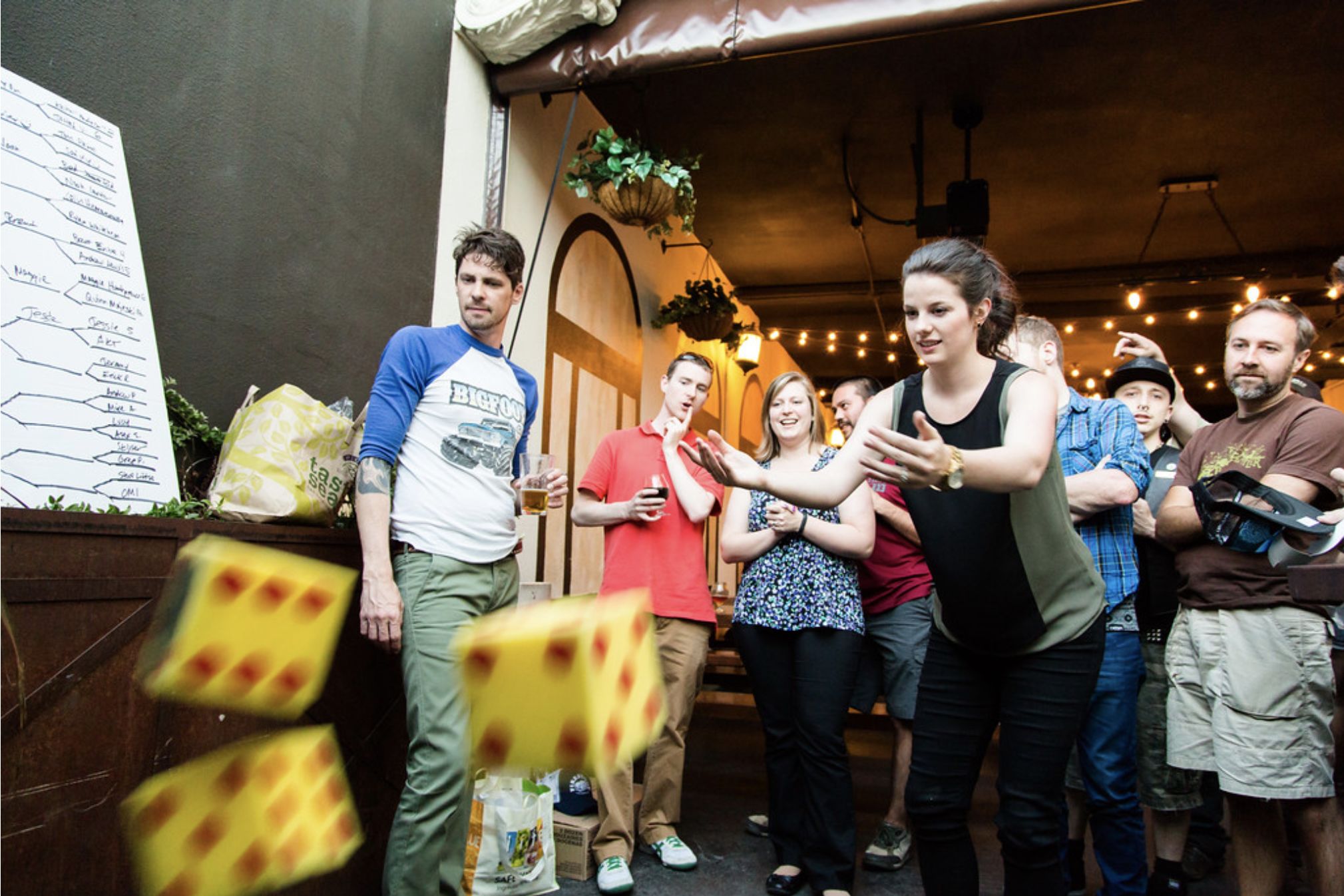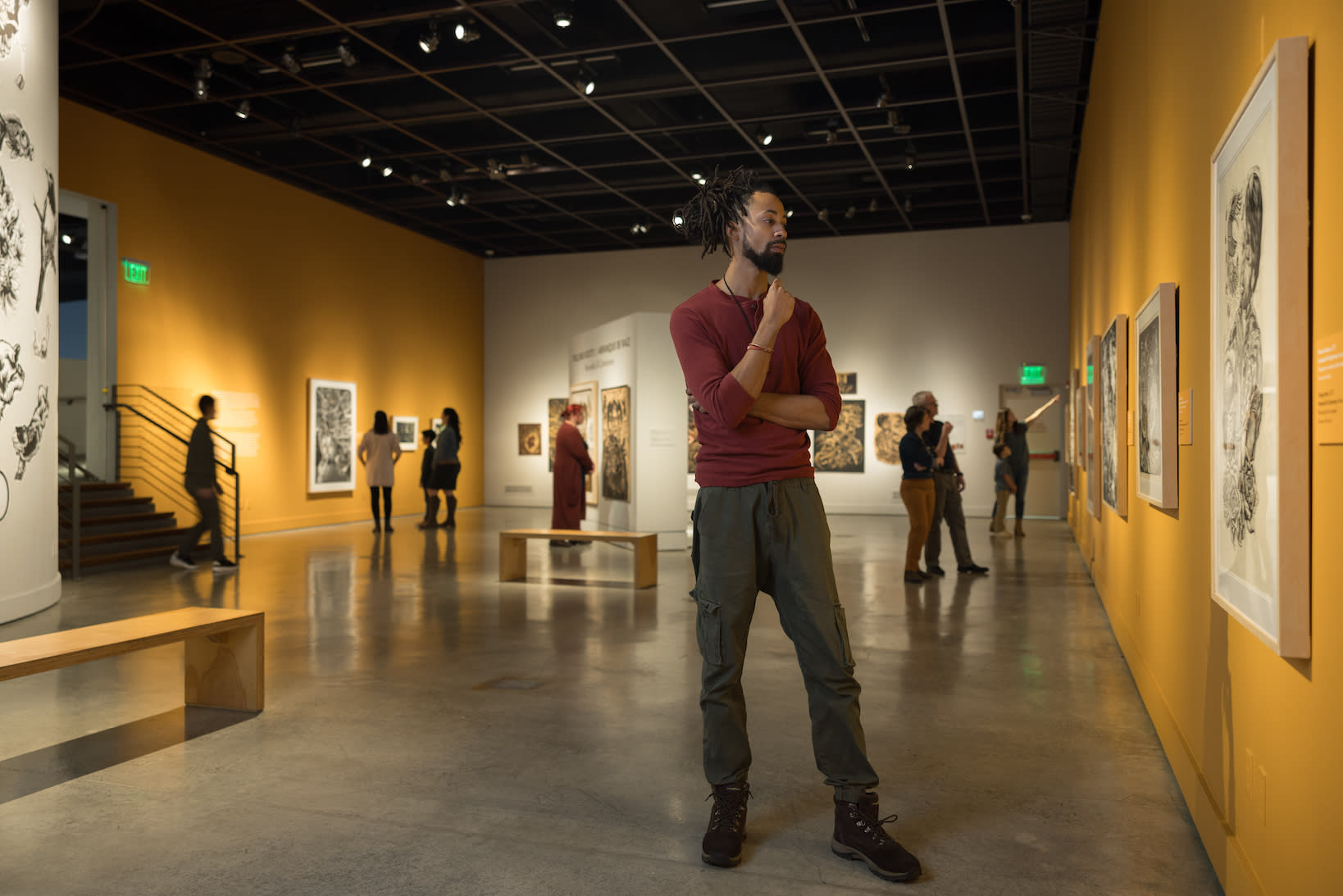Rehabilitating Uncle SAM

Albert Bierstadt’s Puget Sound on the Pacific Coast looms over visitors.
Image: Courtesy SAM
As you ascend an escalator, a magisterially high ceiling soaring above, hushed and carefully temperature-controlled air swirling below, the third floor of the Seattle Art Museum comes into view. It wouldn’t be unusual to find the American art gallery here sparsely populated, the majestic landscape paintings and regal oil portraits looking out upon a mostly empty room. But the gallery, which has remained largely untouched since 2007, is currently more bereft of visitors than usual: It’s shuttered for a radical overhaul, designed to breathe new life into this quiet corner of the museum. The new iteration, American Art: The Stories We Carry, will be unveiled in October.
If you’re Jake Prendez, artist and owner of the Nepantla Cultural Arts Gallery, a nucleus of Latinx creativity located on the cusp of White Center in Delridge, you wouldn’t have lingered anyway. The American art gallery might have brimmed with “beautifully executed pieces,” but there was “nothing that connected me to it,” says Prendez when he recalls visits in years past. In that gallery room, curated as it was, Chicanos like him were never considered American—he was always something “hyphen” American.
Then SAM contacted him in spring of 2021 about sitting on a community advisory circle for a redesign of its American collection. Prendez felt a thrill at the prospect of collaborating with the Northwest’s preeminent art institution; it could mean big things for his gallery. He also felt some wariness. Would it be an extension of the tokenization the gallery had inflicted on artists of color? Was SAM just hoping to ride the coattails of groups that were actually doing the work?
Those first few advisory committee meetings were an “airing of grievances.” To the institution’s credit, Prendez says, Theresa Papanikolas, the Ann M. Barwick Curator of American Art, and curator of Native American art Barbara Brotherton came ready to listen—and let the committee take the wheel in meaningful ways.
We are a city that doesn’t understand Latinos, Prendez says, doesn’t even know that they’re here, despite a rich history of Chicano activism: “We’re kind of this invisible community.” According to a 2021 breakdown of King County public arts funding released by 4Culture, artists who identified as Black received just over 30 percent of grants relative to the 6 percent of the county’s population of which they’re a part. Self-identified Alaskan Natives and American Indians, who make up about 1 percent of the population, received 7 percent. By contrast, the 10 percent of the population that is Latinx received 3 percent. SAM wasn’t any better: “The only art that I saw from my people was in the Indigenous collections. And that stuff was stolen.”
Papanikolas says the dearth of works by contemporary Latinx artists was the most striking gap in the collection she identified, thanks to the advisory circle. Prendez issued an open invitation to a show last September at the Nepantla Gallery entitled Latinx in the Northwest, and Papanikolas came. It made a stunning impression. In spring of 2022, SAM acquired Four Self Portraits (1995) by famed Seattle-based painter Alfredo Arreguin, whose arrestingly colorful works hang in the Smithsonian, and had been featured in the Nepantla show, but have never appeared in the SAM’s permanent collection until now.
Portraits were always central to the American collection. “I remember one of our advisors saying, ‘Oh, it’s just all these white faces staring at me,’” relays Papanikolas. The new plan’s portraiture will highlight who has historically been represented via portraits—which emphasize the individual, the person—and who has been rendered an anonymous object, a symbol, as in the photography of Edward S. Curtis (not on display in The Stories We Carry) and Alexander Phimister Proctor’s bronze cast Indian Warrior (1900–1909).

Left: Inye Wokoma. Right: Wendy Red Star.
Image: Courtesy SAM
A stark contrast to Curtis’s photographs, which center an often voyeuristic white male gaze, is an original piece commissioned from Portland-based artist Wendy Red Star, of the Apsáalooke (Crow) Tribe. It depicts the Seattle skyline via overlapping portraits of Native women and children. Red Star’s piece is about the powerful women who shaped this land’s original communities prior to displacement.
Inye Wokoma, cofounder of Black arts collective Wa Na Wari, is no stranger to displacement; he’s watched a diaspora occur over the past 20 years in the Central District, where his former family home has become a vital oasis for Black culture. In spring of 2021, Papanikolas and Brotherton reached out, asking to visit Wa Na Wari. Wokoma didn’t think much of it; he regularly hosts artists and scholars. Toward the end of the visit, however, Papanikolas revealed that they were planning a massive overhaul of SAM’s American collection. Would Wokoma be willing to contribute a commissioned work?
Much like Prendez, Wokoma had visited the American art gallery before but left unimpressed. The vision of our nation that it offered was one with which he was intimately familiar—because it was the one unilaterally dictating his “individual and collective reality” as a Black man in America. The thing that struck him most was the fact that you had to pass through the American collection to access the Native art: “There’s this whole other section of Native American art…that I actually didn’t know was there.”
At first, says Wokoma, he didn’t understand what he was saying yes to—but he said it anyway, with enthusiasm. He ultimately elected not to contribute an original work, leaving that to Red Star and Nicholas Galanin, a Tlingit and Unangax visual artist
from Alaska. Instead, he took on something akin to a curatorial consulting role, designing and writing labels for a section of the gallery that “is about exploring our individual collective identities here in the Pacific Northwest,” and how art contributes to the formation of a people and a place.
When he looks at Albert Bierstadt’s Puget Sound on the Pacific Coast (1870), he doesn’t just see arresting, rugged majesty. He sees the Pacific Northwest as many on the other side of the continent must have at the time, in its most romanticized, idealized form, a land of unspoiled beauty and promise. To Wokoma, the underlying political agenda is manifest.
This isn’t the first time Wokoma has worked with SAM; he was also an advisor for Jacob Lawrence: the American Struggle (March–May 2021), and he thinks that this “shared-authorship model,” as a June 2021 press release put it, is an encouraging step forward. Like Prendez, he felt that their recommendations carried real weight.
Writer and independent curator Mayumi Tsutakawa, daughter of celebrated sculptor George Tsutakawa, concurs. She also sat on the advisory circle, lending her expertise on Asian and Pacific American art. But she points out that Wing Luke Museum has been drawing on community advisors for decades; there’s nothing particularly revelatory about SAM’s approach. Nevertheless, Tsutakawa says it felt like “the first time the museum was really opening up and reaching out.”
“This doesn’t fix things,” says Prendez, with a weary laugh. Personally, he believes that art institutions, in general, need to start repatriating stolen artworks, if they truly want to live up to their professed anti-colonial ideals. Wokoma takes that hypothetical a step further, saying that if any given institution is truly concerned about preserving a work in perpetuity, they ought to provide its community of origin the resources to care for and maintain it.
The “hard conversations” Papanikolas and Brotherton had with the advisory committee over the past year and a half strained the museum’s institutional framework at its seams. Some advisors were clear that art from their communities “shouldn’t be shown to illustrate American art,” remembers Brotherton, that it ought to stand on its own “aesthetic systems, value systems,” and philosophies. Prendez insists, passionately, that “African American art is American art. Chicano art is American art. We don’t need to be compared to other people to have what we’re creating justified.”
This tension, this constant push and pull and restless renegotiation is, perhaps, the essence of what it means to be American in our particular corner of the country. Constantly grappling with the stories we carry, inching incrementally toward change, all the while never quite agreeing on what a better future looks like—other than something to which we all aspire.




